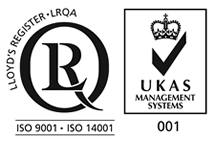
Main Products
Copyright 1998-2025 Firmetal Group All Rights Reserved. | Sitemap
It can be used to manufacture structural components and assemblies in aerospace engineering. Titanium ingot containing titanium, vanadium, molybdenum, chromium, iron, zirconium, oxygen and nitrogen is manufactured from the products deformed from near-β titanium alloy. The ingot is thermmechanically processed by repeated heating, deformation and cooling. A high-precision stamped product with a thickness of more than 100mm and a length of more than 6m in a cross section is produced, which has a stable value of high ultimate tensile strength and fracture toughness.
The high specific strength of near-β titanium alloys is very favorable for their application in fuselage structures. The main obstacles to building a competitive airliner lie in structural manufacturing and material selection as well as a good balance of performance and weight. The current trend to increase the size and weight of commercial aircraft determines the demand for these alloys, which in turn results in an increased cross-section of high-load components such as landing gear and fuselage components with the required uniform level of mechanical properties. In addition, the requirements for materials have become significantly more stringent, that is, a good balance of high strength and high fracture toughness has become a requirement.
The structure is made of high alloy steel or titanium alloy. Replacing alloy steel with titanium alloy is potentially very advantageous as it drives at least 1.5 times the weight loss, improves corrosion resistance and reduces maintenance. These titanium alloys provide a solution to this problem and can be used to manufacture a wide range of important products, including large die forgings and forgings with a cross-section size of more than 150 ~ 200mm and semi-finished products with a small cross-section, such as bars and plates with a thickness of up to 75mm, which are widely used in the manufacture of different aircraft components, including fasteners. Despite the favorable strength behavior of these titanium alloys compared to steel, their application is limited by the processing capacity, namely by the following limitations: due to the lower thermal processing temperatures compared to high-alloy steels, relatively large strains during hot processing, low thermal conductivity, and difficulty in achieving uniform mechanical properties and structures, especially for thick section parts. Therefore, a separate processing method is required to obtain the specified metal.